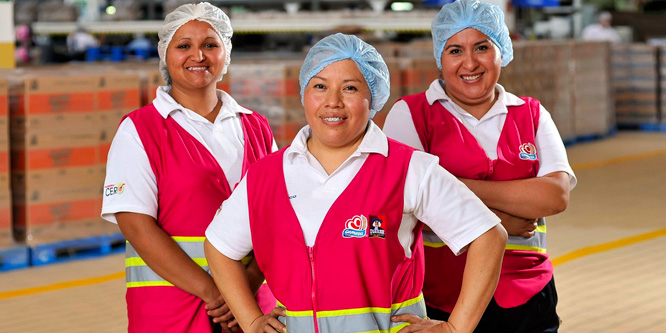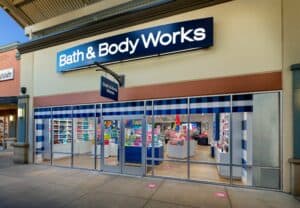
Photo: PepsiCo
January 18, 2023
PepsiCo’s retention recipe starts with technology
In an employment landscape with a lot of turnover, in which people are leaving the workforce altogether and wage increases are failing to go as far as they once did with employees, PepsiCo has begun investing in technology and automation and operational changes to keep its workers happy, fulfilled and on-board. Steven Williams, CEO of PepsiCo North America, explained how in a keynote session at the 2023 NRF Big Show.
PepsiCo has found that process-streamlining technologies can help to remove friction in simple processes, which increase employee satisfaction and retention. For instance, updating handheld devices allows for ordering from the distribution center by scanning, rather than requiring employees to key in order information manually.
The company has also implemented technology to enable flexible scheduling, letting people work more hours per-day for four- or even three-day weeks instead of the traditional five-day a week schedule.
“I think it is very important that even in these traditional businesses, we figure out how to give employees what they’re asking for or they’re going to continue to quit,” said Mr. Williams.
In industrial settings, PepsiCo has found that taking steps to improve safety, such as when performing automating accident-prone tasks in the warehouse, can help improve the retention of warehouse workers.
With employees concerned about not just safety, but overall working conditions, the company has made a concerted effort to improve all of its facilities. This includes non-frontline/office environments like distribution centers, which once tended to be overlooked as places in need of amenities for employees.
“Guess what, [distribution centers] need break rooms,” said Mr. Williams. “They need places to gather.”
And the company has launched initiatives to give employees more recognition and encourage a focus on mental health. The latter has included bringing in a psychologist for sessions to discuss the importance of getting help if necessary.
“I used to think, I want to keep my employees safe, go to work and come home like they came in,” said Mr. Williams. “That’s not enough anymore. You have to do that and be concerned with their overall well being … People are different today than they were three years ago.”
Discussion Questions
DISCUSSION QUESTIONS: What processes do you see companies streamlining with technology to make for better employee experiences? What other non-pay improvements play the biggest role in retention?
Poll
BrainTrust
Gary Sankary
Retail Industry Strategy, Esri
Brian Cluster
Insights Consultant
Lisa Goller
B2B Content Strategist
Recent Discussions







I would think that flexible scheduling may be number one with families with children/two-earner households. Streamlining and even eliminating tedious, boring tasks and enabling employees to perform more of the satisfying or advanced tasks, would appeal to all. After all, feeling productive is always internally rewarding.
Any technology that empowers front line workers to do their jobs better helps with retention. Any technology that “watches” or “measures” without empowering ultimately works against the company. I wish more companies were in the first category.
To boost morale and productivity, more companies are automating fulfillment, inventory management and recruiting.
Companies that commit to flexible work, wellness and ongoing development gain an edge in retention.
Interesting that the same sorts of tactics and technologies that are used for enhancing customer experiences are also useful for managing employee retention. Transparency, removing friction in transactions, creating a sense of community. Makes a ton of sense. Employees, like customers, who feel connected and engaged with their employers are more likely to stick around.
My short answer would be to do what PepsiCo is doing. Use technology to keep employees safer, give them more flexibility in their work schedules, and make their daily repetitive tasks easier. A very broad umbrella approach is to treat them like the assets they are and not as an expense to be minimized.
Wait! Scanning is the new technology Pepsi has come up with? He said that with a straight face?
Better than average pay, health benefits, worker safety, and then flexible schedules are the top features of job retention employees in “industrial settings” care about. The rest is nice, but not the key to keeping employees.
He really said the scanning thing?
Good for Pepsi. I am happy to see this implemented. However, Pepsi’s choice of tools is nothing new.
Hopefully, it takes a high-profile company like Pepsi to highlight to others what should be done.
Fortunately, I was able to see this session live at NRF. Most retailers and brands focus on the customer user experience but the increased use of various tech within the enterprise needs to be evaluated from an employee perspective. It is another way to retain workers because many little headaches can add up to something bigger for some employees.
We are no longer in a situation where dedicated employees are happy working with an archaic user experience and clunky technology. They live with consumer-grade tech that works great. Two best practices include having annual surveys on some of the most commonly used techs and to partner with solution providers to configure/adapt the solution to how the employees use it and to reduce friction. The second best practice is to have a customer service line from IT allow for feedback from enterprise tech users and continuously monitor and have action items to improve their experience.
First, people are not different today than they were a few years back. They still want the same thing, they are just more willing to take action if those things are not offered. The things they want include: